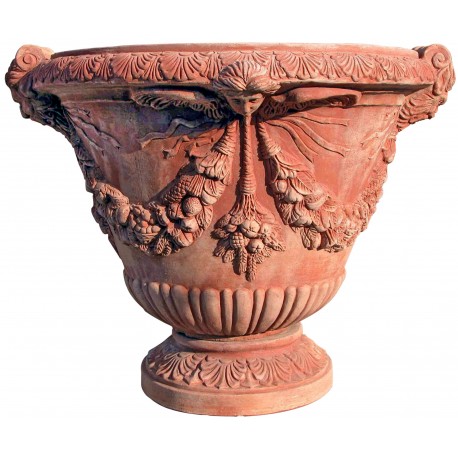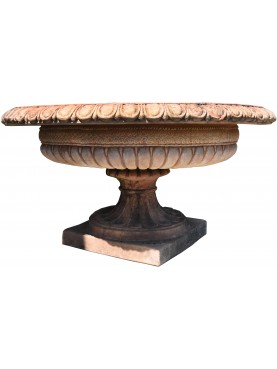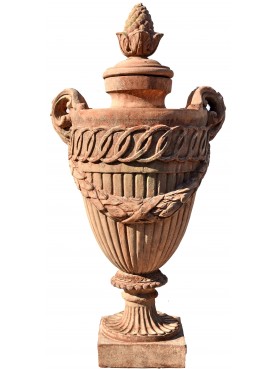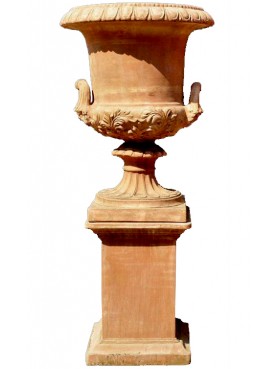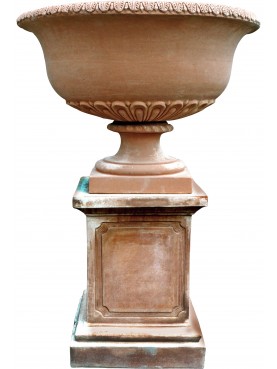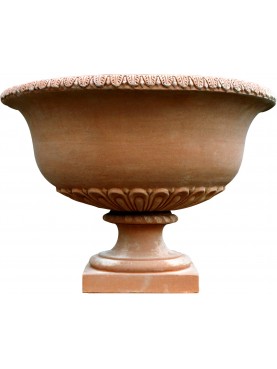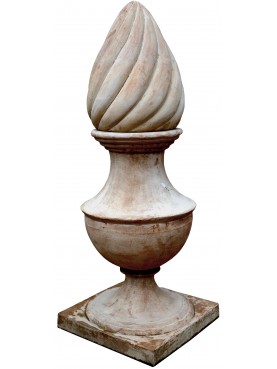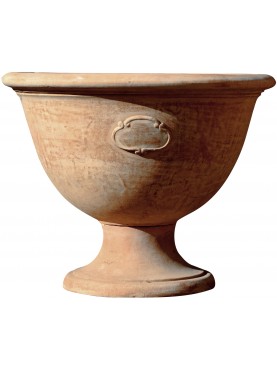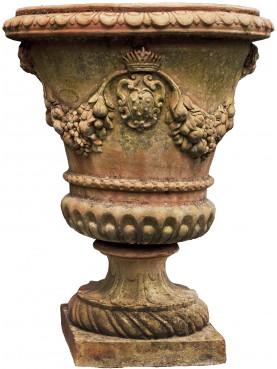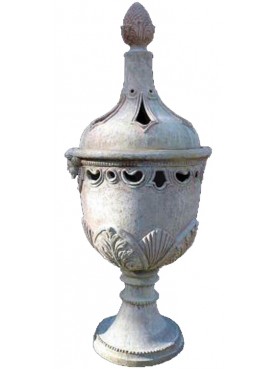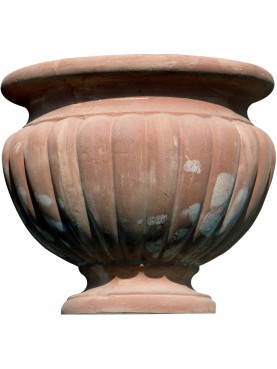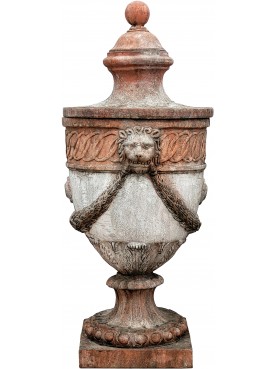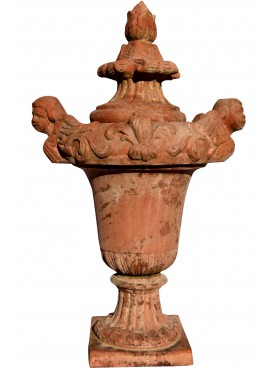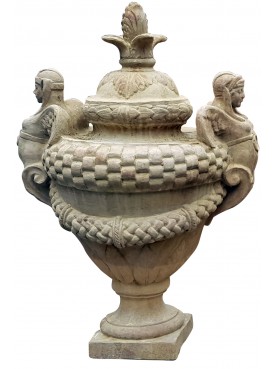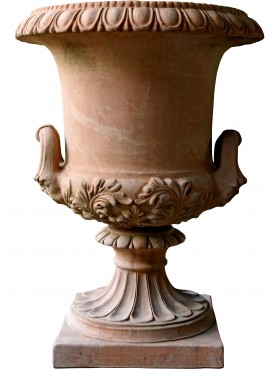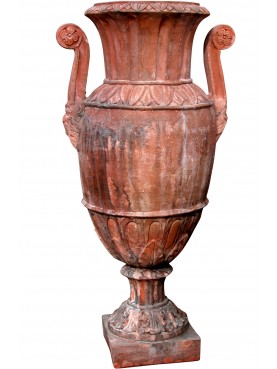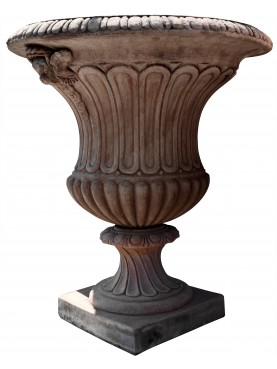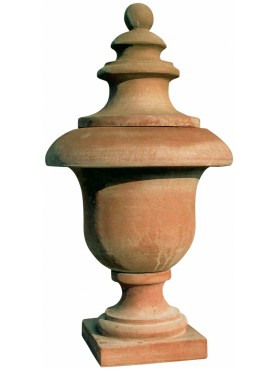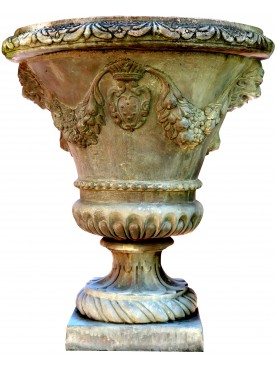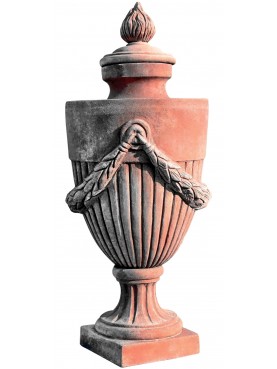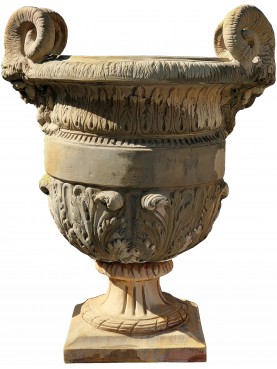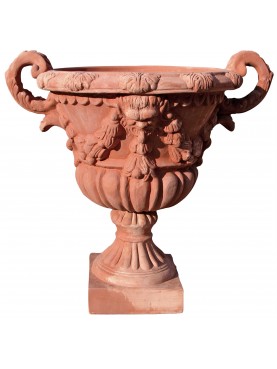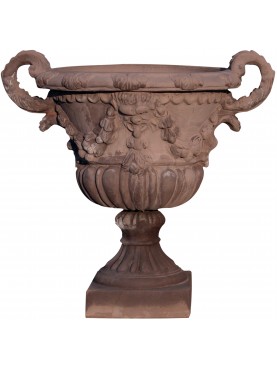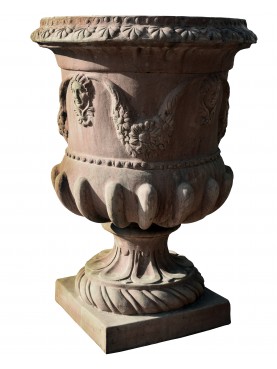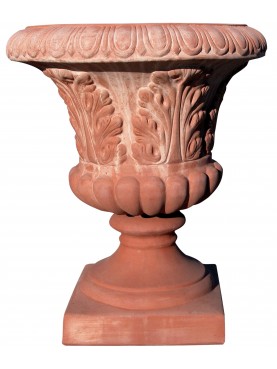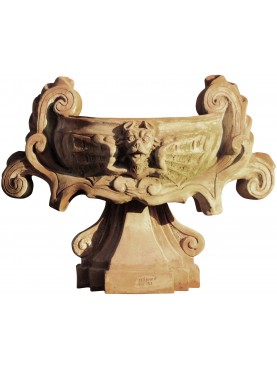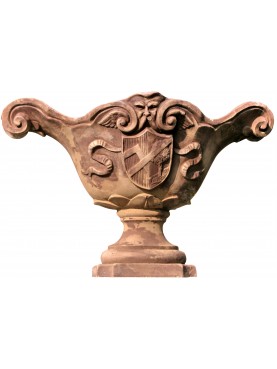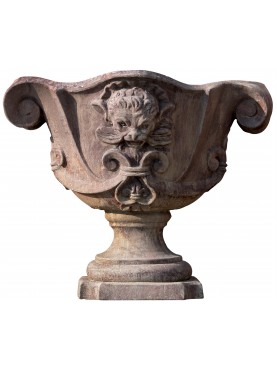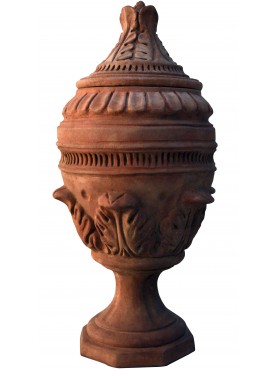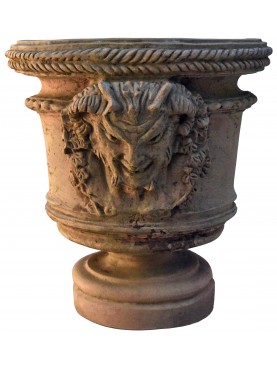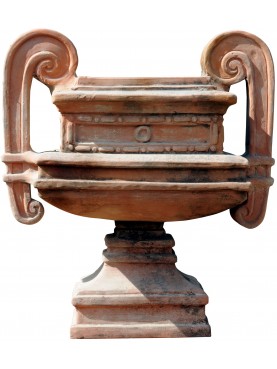Medici's Terracotta pot of the Boboli Garden (Florence)
Medici's Terracotta pot of the Boboli Garden (Florence)
2514
New
Large Medicean vase with flowers and angels.
Diameter 71 cm - H 72 cm.
In 1898 it was mentioned as "Vaso del Giardino di Boboli" in Florence, the source is: "Memories of Architecture 1898".
6 Available
Data sheet
| Height | 28.35 in | 72 cm |
| Weight | 44.09 lbs | 20 Kg |
| Artist / Creator / Architect | Renaissance | |
| Outer diameter | 27.95 in | 71 cm |
| Internal diameter | 24.02 in | 61 cm |
| Manufacturing | Made in Tuscani Italy | |
| Material | Impruneta terracotta Firenze |
More info
The Boboli Gardens (Italian: Giardino di Boboli) is a park in Florence, Italy, that is home to a collection of sculptures dating from the 16th through the 18th centuries, with some Roman antiquities.
The Gardens, directly behind the Pitti Palace, the main seat of the Medici grand dukes of Tuscany at Florence, are some of the first and most familiar formal 16th-century Italian gardens. The mid-16th- century garden style, as it was developed here, incorporated longer axial developments, wide gravel avenues, a considerable "built" element of stone, the lavish employment of statuary and fountains, and a proliferation of detail, coordinated in semi-private and public spaces that were informed by classical accents: grottos, nympheums, garden temples and the like. The openness of the garden, with an expansive view of the city, was unconventional for its time. The gardens were very lavish, considering no access was allowed to anyone outside the immediate Medici family, and no entertainment or parties ever took place in the gardens.
The Boboli Gardens were laid out for Eleonora di Toledo, the wife of Cosimo I de' Medici. The name is a curruption of "Bogoli", a family from whom land had been bought to construct the garden. The first stage was scarcely begun by Niccolò Tribolo before he died in 1550, then was continued by Bartolomeo Ammanati, with contributions in planning from Giorgio Vasari, who laid out the grottos, and in sculpture by Bernardo Buontalenti. The elaborate architecture of the grotto in the courtyard that separates the palace from its garden is by Buontalenti.
The garden lacks a natural water source. To water the plants in the garden, a conduit was built from the nearby Arno River to feed water into an elaborate irrigation system.
The primary axis, centered on the rear façade of the palace, rises on Boboli Hill from a deep amphitheater that is reminiscent in its shape of one half of a classical hippodrome or racecourse. At the center of the amphitheater and rather dwarfed by its position is the Ancient Egyptian Boboli obelisk brought from the Villa Medici at Rome. This primary axis terminates in a fountain of Neptune (known to the irreverent Florentines as the "Fountain of the Fork" for Neptune's trident), with the sculpture of Neptune by Stoldo Lorenzi visible against the skyline as a visitor climbs the slope.
Giulio Parigi laid out the long secondary axis, the Viottolone or Cyprus Road at a right angle to the primary axis. This road led up through a series of terraces and water features, the main one being the Isolotto complex, with the bosquets on either side, and then allowed for exit from the gardens almost at Porta Romana, which was one of the main gates of the walled city. In 1617, Parigi constructed the Grotto of Vulcan (Grotticina di Vulcano) along this axis.
The gardens have passed through several stages of enlargement and restructuring work. They were enlarged in the 17th century to their present extent of 45,000 meters (111 acres). The Boboli Gardens have come to form an outdoor museum of garden sculpture that includes Roman antiquities as well as 16th and 17th century works.
In the first phase of building, the amphitheatre was excavated in the hillside behind the palace. Initially formed by clipped edges and greens, it was later formalized by rebuilding in stone decorated with statues based on Roman myths such as the Fountain of the Ocean sculpted by Giambologna, then transferred to another location within the same garden. The small Grotto of Madama, and the Large Grotto, were begun by Vasari and completed by Ammannati and Buontalenti between 1583 and 1593.
Even while undergoing restoration work in 2015, the Large Grotto's statues are still on display and represent defining examples of Mannerist sculpture and architecture. Decorated internally and externally with stalactites and originally equipped with waterworks and luxuriant vegetation, the fountain is divided into three main sections. The first one was frescoed to create the illusion of a natural grotto, that is a natural refuge to allow shepherds to protect themselves from wild animals; it originally housed The Prisoners of Michelangelo (now replaced by copies), statues that were first intended for the tomb of the Pope Julius II. Other rooms in the Grotto contain Giambologna's famous Bathing Venus and an 18th-century group of Paris and Helen by Vincenzo de' Rossi.
Source: Wikipedia
Gabriele D'Annunzio and The Florentine period (1894-1904)
Also in 1892 he began a correspondence with the famous actress Eleonora Duse, with whom the central season of her life began. They met each other personally in 1894 and love immediately started. To live next to his new partner, D'Annunzio moved to Florence, in the Settignano area, where he rented the villa La Capponcina - from the name of the Capponi family who had been its owner - (very close to the actress La Porziuncola villa) , transforming it into a monument of decadent aesthetic taste, defined by him "the life of the Renaissance lord".

